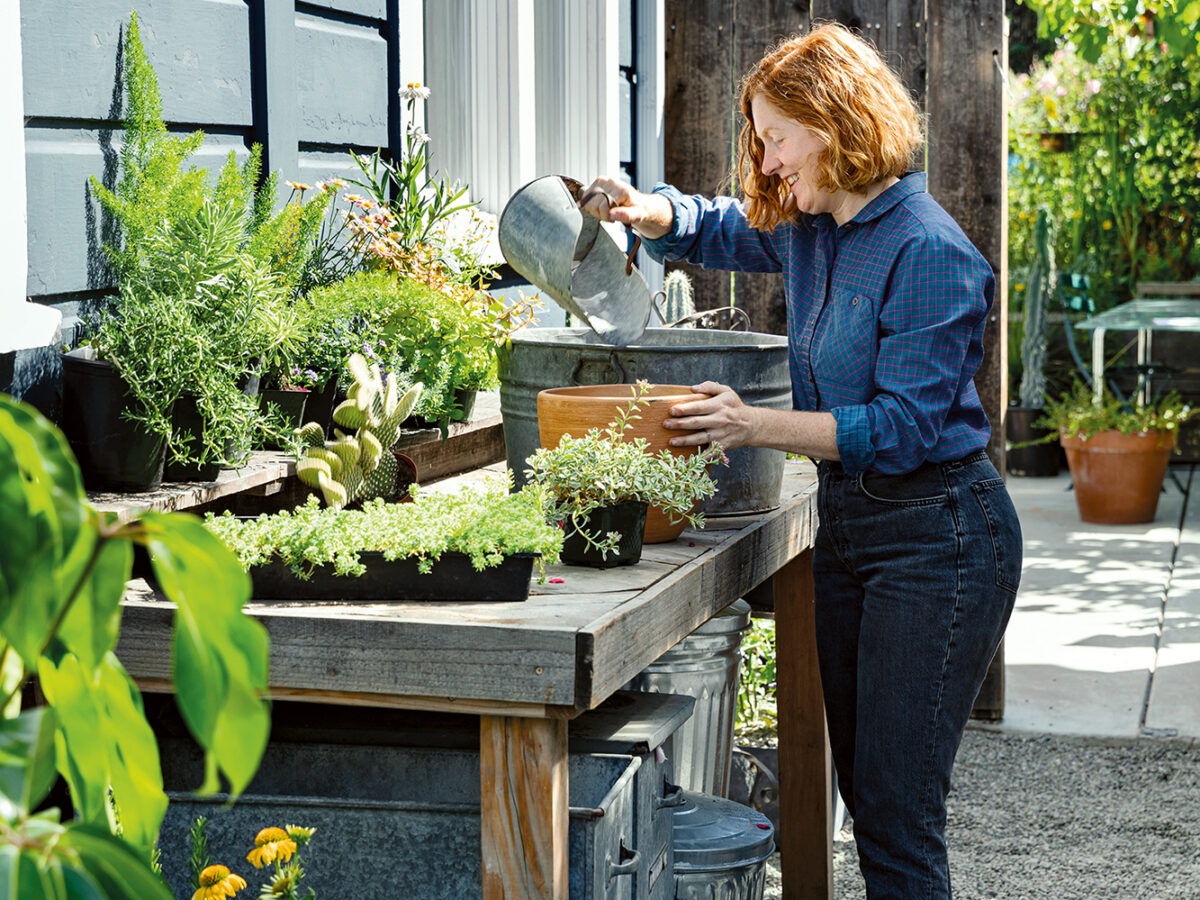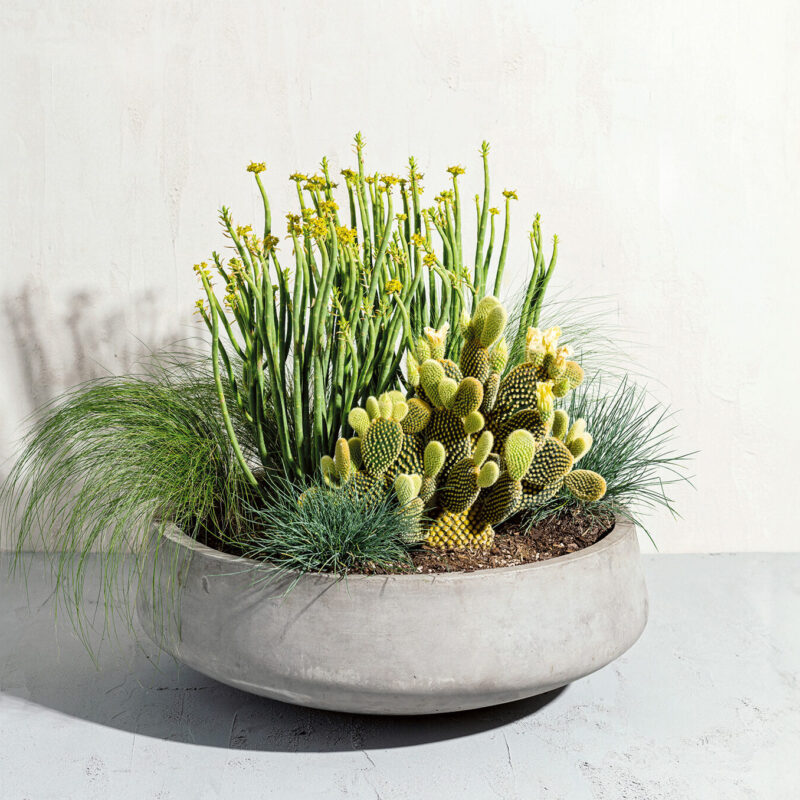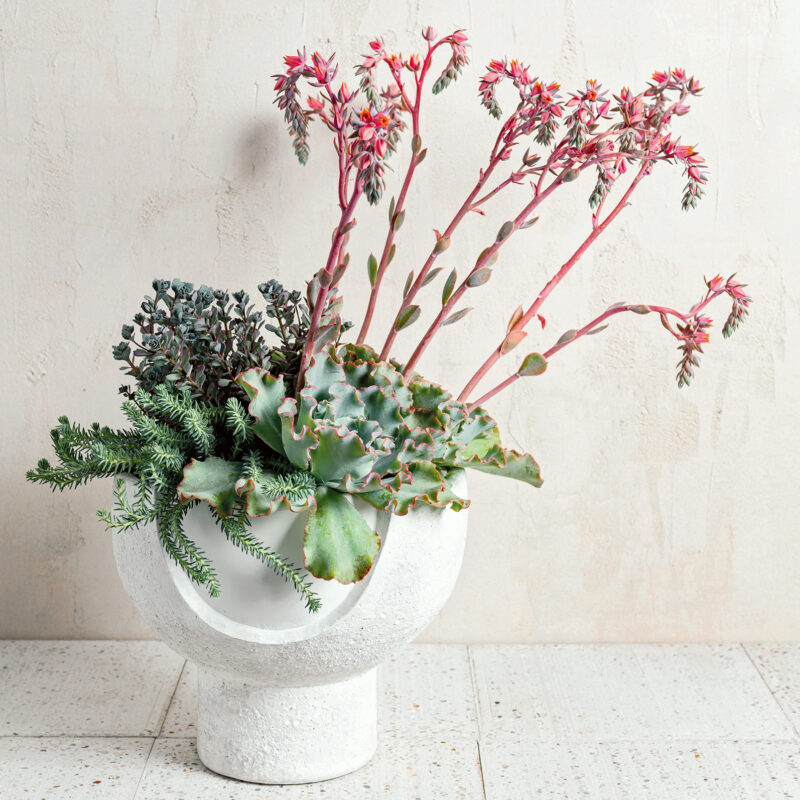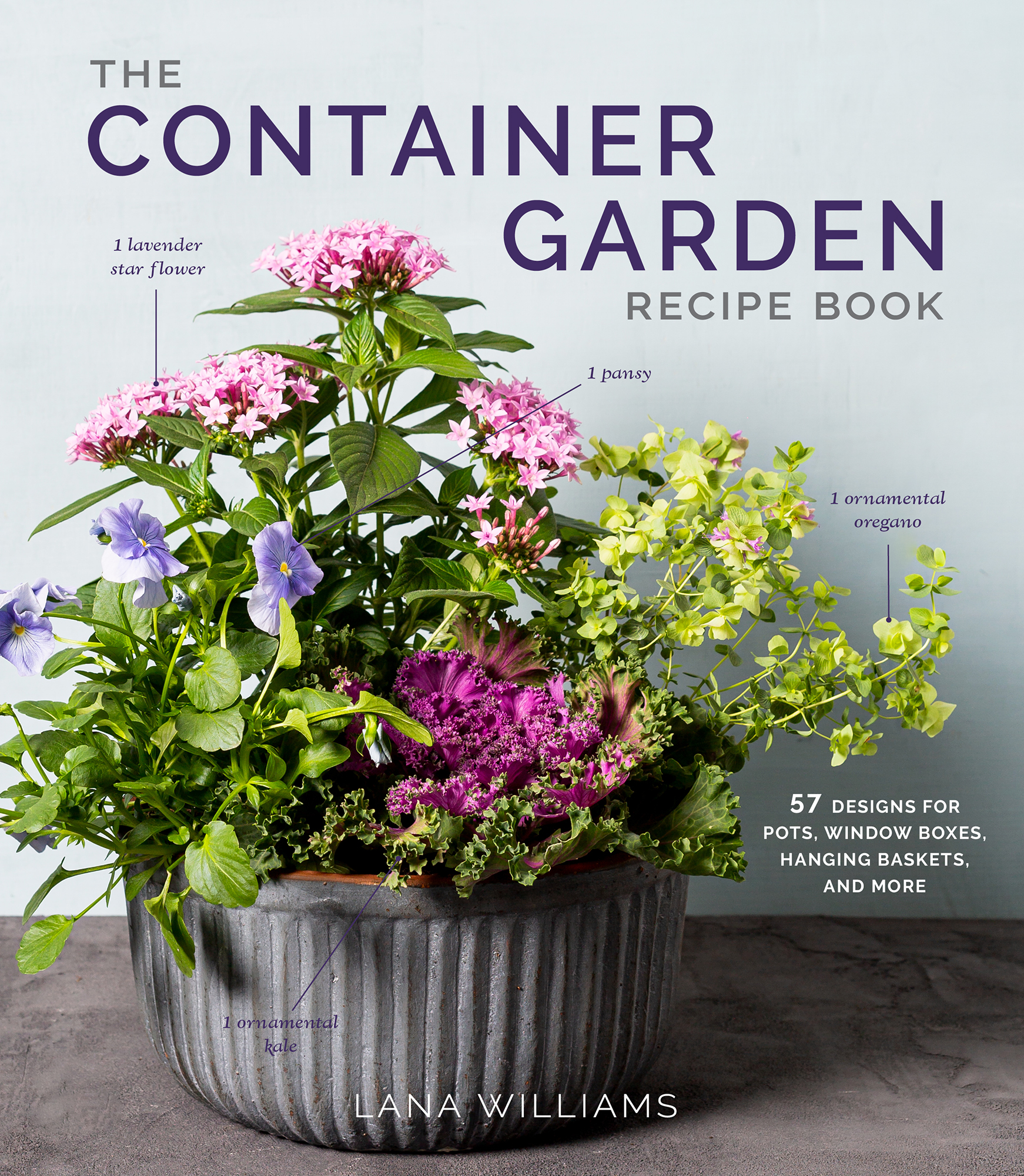These Are the 4 Commandments of Container Gardening
Lana Williams shares foolproof recipes for potting up the perfect container garden.

Lana Williams, owner of Oakland, California-based plant shop and design company The Tender Gardener, is known for her gorgeous step-by-step plant recipes for creating lush outdoor planters. In Lana’s latest book release, The Container Garden Recipe Book, she’s revealing fabulous floral and frond combos that will have you making plant and pot pairings like a pro. Here she shares a few seasonally appropriate tips on the types of statement plants and containers to use as we transition from late summer into fall.
Know Your Number

Excerpted from The Container Garden Recipe Book by Lana Williams. Published by Artisan Books. Photographs by Erin Scott. Copyright © 2024.
Lana goes by a loose rule of sticking with odd numbers when selecting plant combinations. To start, try to mix three different plants in one container, each with a contrasting color and texture. When building a larger container that fits six plants, try using one strong focal plant, two wispy textured plants, and three of the same trailing plants for cohesive flow and interest. Keep in mind that arrangements that are not perfectly symmetrical or balanced often make more interesting and dynamic creations.
Seasonally Stunning
When it comes to selecting plants that transition well from late summer into fall, Lana leans into grasses as they transform from a supporting role in a container to being the star. Depending on the variety, grasses can have dramatic feathery and colorful plumes. For flower lovers, try coreopsis or rudbeckia, which are profuse bloomers and have cheerful hues and deep red flowers with distinctive centers. Pumpkins and gourds also make surprisingly chic containers when reaching for more heirloom varieties. Select plants to coordinate with the color of the pumpkin, such as a sage green squash mixed with plants that have both similar silvery foliage and contrasting shades of deep burgundy. Color choice is the deciding factor when it comes to festive versus refined for any fall arrangement.
Vessel Vibes

Excerpted from The Container Garden Recipe Book by Lana Williams. Published by Artisan Books. Photographs by Erin Scott. Copyright © 2024.
Lana hits up antique markets and estate sales for her unique planters and has collected everything from vintage urns to copper water dispensers when styling up her signature creations. In her book, she encourages you to reconsider traditional pots and expand your imagination as to what could potentially hold soil. The first step is to consider the scale and the space you intend to fill with plants, then decide whether you want a statement stand-alone plant or a collection of complementary containers. Pots don’t always have to be the star, either. If you wish to showcase a bounty of botanicals without distraction, aim for a more neutral palette and shapes, which will allow the planter to disappear while your arrangement shines. What Lana loves most about working within containers is their ability to change. By rearranging, moving, and reconfiguring them, she hopes to inspire the ease with which plants and pots can be swapped out, and in turn, embrace change as one of many lessons plants can teach us.
Transitional Tip

Excerpted from The Container Garden Recipe Book by Lana Williams. Published by Artisan Books. Photographs by Erin Scott. Copyright © 2024.
Spring-planted containers might be looking tired and leggy by late summer—Lana suggests keeping containers looking fresh by regularly deadheading any flowers that have wilted, which will also encourage new blooms. Be sure to check the foliage and soil around the base of the plants, removing any dead and yellow leaves or debris that have collected on the top of the soil. This little bit of mindful maintenance will keep the containers looking tidy while preventing pests and disease. While some plants might benefit from pruning and grooming, many annuals that have finished their flower display should be swapped out for new seasonal blooms. Think of this as the perfect opportunity to shift the color palette for the changing season ahead.
Try This Recipe at Home

Excerpted from The Container Garden Recipe Book by Lana Williams. Published by Artisan Books. Photographs by Erin Scott. Copyright © 2024.
In Lana’s book, she customizes the ultimate pot and plant pairings, but we especially love this one where she also created the textured ceramic pot with drippy glaze to intentionally play off the botanicals. Here the velvety leaves of Kalanchoe tomentosa pop off the white fuzzy hairs of Cephalocereus senilis. These different textures, shapes, and softness contrast playfully with the shiny surface of the bowl. We hope this recipe will inspire many new container combinations of your own!
Seasons: All
Light: Full sun to partial sun
Water: Low
Plants:
One 6-inch (15 cm) old man cactus (Cephalocereus senilis)
One 3-inch (8 cm) panda plant (Kalanchoe tomentosa)
Two 3-inch (8 cm) variegated lavender scallops (Kalanchoe fedtschenkoi ‘Variegata’)
One 4-inch (10 cm) “Blue Pearl” sedum (Hylotelephium)
Container & Materials:
12-inch (30 cm) hand-built ceramic glazed bowl
Succulent and cactus potting mix
Wear leather gloves for this recipe, as you’ll be dealing with a cactus. Fill the container three-quarters of the way with potting mix and place the old man cactus at the back left. Add more soil to hold the cactus in place.
Place the panda plant at the front right edge of the container.
Place one of the lavender scallops at the front left ledge and the other behind the panda plant. Place the sedum at the front center edge. Fill the gaps with soil and water in the plants.
Get the Book

Excerpted from The Container Garden Recipe Book by Lana Williams. Published by Artisan Books. Photographs by Erin Scott. Copyright © 2024.
We only recommend things we love. If you buy something through our site, we might earn a commission.